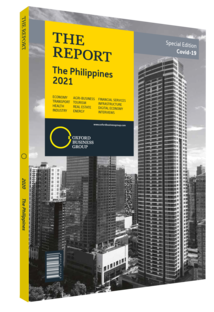Benjamin E Diokno, Governor, Bangko Sentral ng Pilipinas (BSP): Interview

Interview: Benjamin E Diokno
What is your assessment of the BSP’s ability to mitigate the economic challenges brought about by the pandemic and facilitate recovery?
BENJAMIN DIOKNO: With inflation well within the target range of 2-4% and the policy rate at 2.25%, the BSP continues to have ample room to utilise monetary tools to address the economic implications of the pandemic. Our latest estimate is that inflation will average 2.3% in 2020 and 2.8% in 2021. Moreover, our toolkit is far from being exhausted. We will continue to do what is needed to mitigate the economic impact of the crisis on Filipinos.
Which measures have been implemented by the BSP to ensure ample liquidity during this time and help stimulate the economy?
DIOKNO: Among the numerous measures that the BSP has implemented thus far in response to the pandemic is the purchase of government securities in the secondary market. The BSP also loaned P300bn ($5.8bn) to the government under a repurchase agreement – and with the law allowing the government to borrow up to P500bn ($9.7bn), there is still room to lend more.
In addition, under the recently amended charter of the central bank, the institution is now allowed to issue its own debt instruments. As such, the BSP started doing so in the third quarter of 2020, which further enhanced our ability to manage liquidity in the system.
How do you evaluate the banking sector’s stability in terms of its capacity to support the economy and manage the risks of non-performing loans (NPLs)?
DIOKNO: The Philippines is fortunate that the country was in a strong macroeconomic position when the pandemic hit, supported in part by a robust banking system. The banking sector is stable and resilient, with sufficient capitalisation and liquidity, as well as low exposure to bad debts. For example, universal commercial banks had a capital adequacy ratio of 15.3% as of end-March 2020. This is compared to the national standard of 10% as mandated by the BSP, and the international standard of 8% as laid out by Basel III requirements. Furthermore, the Philippine banking system posted an average NPL ratio of 2.4% as of end-May 2020. In comparison, the system-wide average NPL ratio during the Asian Financial Crisis ranged from 3% to 3.4% in the first half of 1997 and peaked at 17.6% in 2002.
To what extent has the pandemic accelerated the adoption of digital banking and cashless payments, and how is the BSP supporting further innovation?
DIOKNO: The BSP aims to have the Philippines transition from a cash-heavy to a cash-light society by mid-2023, with 50% of all financial transactions in terms of both volume and value to be completed electronically by that time. The lockdown period provided an unexpected catalyst for digitalisation, and as such there is optimism that this objective can be met much earlier than 2023. Over 4m digital accounts were opened in the first 100 days of lockdown, and there was a 325% increase in transactions on PESON et, an electronic funds transfer platform, between April and May 2020 alone.
In light of the economic slowdown stemming from the pandemic, what steps should be taken to steer the Philippines back towards a growth trajectory?
DIOKNO: One of the government’s key objectives, aside from a strong macroeconomic performance, is to reduce poverty from 23% in 2015 to 14% by mid-2022. This was nearly achieved in 2018, when the rate was about 16%. Maintaining this trend in light of the pandemic is set to be a challenge, but it remains a top goal.
Meanwhile, the primary mandate of the central bank is price stability, but this should not be a means to an end. The BSP should aim to keep prices consistent and stable with strong and equitable growth. The main beneficiaries of stable prices are low-income households, as they suffer the most when prices are high and fluctuate. This is therefore crucial to ensure inclusive growth.
You have reached the limit of premium articles you can view for free.
Choose from the options below to purchase print or digital editions of our Reports. You can also purchase a website subscription giving you unlimited access to all of our Reports online for 12 months.
If you have already purchased this Report or have a website subscription, please login to continue.

